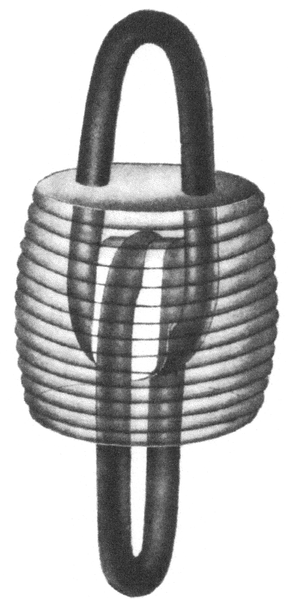[Trade Journal]
Publication: Electrical Age
New York, NY, United States
vol. 35, no. 1, p. 65, col. 2-3
Improved Strain Insulators
IN the manufacture of strain insulators, some important features that are necessary, if the insulators are to be used on pressures higher than 500 volts, are sometimes overlooked. A good strain insulator should have sufficient insulated distance between the two metal parts, sufficient surface insulation, obtained by long distance from metal part on one end to metal part on the other end, and sufficient strength and uniformity in the metal parts.
 |
| A New Strain Insulator Made by the Creaghead Engineering Company, Cincinnati, Ohio |
In the annexed illustration is shown an improved strain insulator, manufactured by the Creaghead Engineering Company, of Cincinnati, Ohio, designed to embody the features just mentioned.
The metal parts are two steel links, generally similar to chain links, made of material of high tensile strength. These links are separated and insulated from each other by a hard porcelain separator, giving considerable distance between the metal parts, and a high electrical resistance.
Around the metal parts and porcelain spreader, is moulded, under very great pressure an insulating compound that thoroughly seats the metal parts on the porcelain, filling all spaces between the porcelain and links, thoroughly weatherproofing the porcelain spreader and protecting it against mechanical injury. This insulating compound is not intended to give the insulator any material mechanical strength, but to protect the spreader. It materially increases the surface insulation, and separates the exposed portions of the strain insulator by a large distance.
The illustration represents the full size of Bourbon No. 2 strain insulator, which is tested to a breaking strain of about 4000 pounds. The Bourbon No. 4 insulator is of larger size. The lineal dimensions are increased about 50 per cent., and it is tested under average breaking strain of about 8000 pounds. These insulators can be safely used on 1000 volts working pressure, under ordinary weather conditions, and are used in series of two or more on high pressures for insulating guy and anchor wires.
